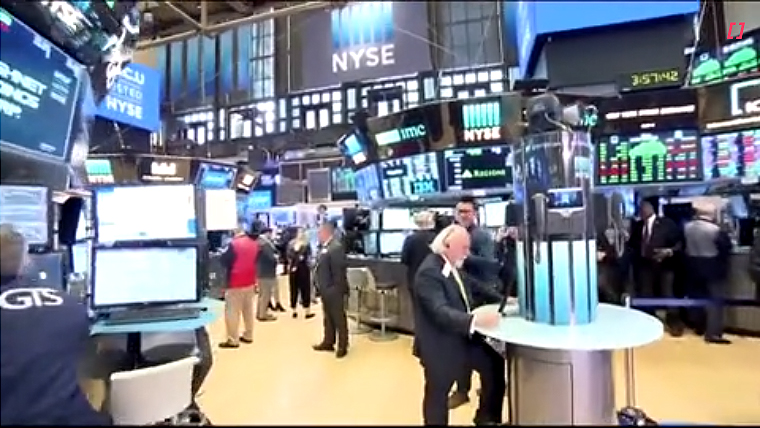
Ahead of the Fed’s policy announcement soon after we go to print, there has been some reversal of the Trump trade in currency and bond markets, while US equities have continued to power ahead. The USD is broadly weaker, seeing the NZD push up through 0.60. US Treasury yields are lower, and the curve is flatter. The BoE delivered a 25bps rate cut, as expected, with guidance of further gradual rate cuts.
After the strong market reaction to Trump’s victory, there has been a partial reversal in some markets, although not evident in US equities. Following the strongest ever gain for the S&P500 in the day after a presidential election (up 2½%), the index is currently up another 0.7% to a fresh record high. Gains for the Nasdaq index have been even stronger, up another 1.4% following yesterday’s nearly 3% gain. The Russell 2000 index is flat after its nearly 6% gain yesterday. Equities are loving the prospect of lower taxes and deregulation under the new government.
US Treasury yields are lower and the curve is flatter. For the day the 2-year rate is down 6bps, while the 10-year rate is down 9bps to 4.34%. The Fed policy announcement comes out at 8am NZ time which could change all this, but a 25bps cut to the Fed Funds rate is fully priced. Chair Powell will attempt to remain apolitical in the face of questions fired at him about the policy outlook under Trump 2.0. The door will likely be left open to further easing, dependent on the data.
The USD is broadly weaker, with the DXY index down 0.7% after its chunky 1.6% post-victory gain. The NZD traded stronger yesterday afternoon with further overnight gains, getting up towards 0.6040 before retracing. The AUD has been even stronger, up over 1½% from this time yesterday to 0.6675, seeing NZD/AUD push down to 0.9025.
Other NZD crosses are stronger since this time yesterday, with the NZD making stronger gains against the USD than other majors. JPY has been supported by the backdrop of lower US Treasury yields. The euro was unaffected by the collapse of Germany’s government and Chancellor Scholz calling an early election. GBP was broadly unaffected by the BoE rate cut, performing in line with the stronger euro overnight.
The BoE cut its policy rate by 25bps to 4.75% as expected, the second rate cut this cycle. The vote was 8-1, with prevailing hawk Mann voting to keep rates unchanged. The effect of the UK Budget was said to boost the level of GDP by ¾% at its peak in a year’s time and CPI inflation by just under ½%. Inflation now isn’t expected to fall below 2% until Q2 2027, a year later than previously thought, although that is based on recent market pricing that had built in an extra 25bps cut.
BoE Governor Bailey noted that the Bank “can’t cut interest rates too quickly or by too much” but based on its forecasts “it’s likely that interest rates will continue to fall gradually from here”. This was a more hawkish tone compared to his “more activist” policy comment a month ago, albeit consistent with market pricing of only about two cuts through to the middle of next year.
In economic news, US productivity rose at an annualised pace of 2.2% in Q3, slightly weaker than expected, alongside downward revisions to historical data. This meant unit labour costs were running stronger than previously reported, although the annualised figure of 1.9% for Q3 was still in line with inflation running close to 2%. Initial jobless claims rose 3k to 221k last week, with further evidence of a return to normal after recent strike and hurricane noise in the data.
China export data was much stronger than expected, up 12.7% y/y in October and boosting its trade surplus as imports remained weak, falling 2.3% y/y. There will be increasing focus on China trade figures, with Trump’s policy of raising tariffs to punishing levels. Ahead of their imposition, which could be phased in from around the middle of next year, there is likely to be some front-loading of Chinese imports into the US and China will also be looking to expand its export markets.
Yesterday, we finally saw some cross market underperformance for the NZ rates market. There was payside pressure in the swaps market, led by the belly of the curve, with the 5-year rate up 8bps to 3.98%. The 2 and 10-year swap rates were up 5-6bps. These movements spilled over into the bond market, with rates up 4-6bps across the curve. We should see some reversal today. Since the NZ close the Australian 10-year bond future is down 6bps in yield terms, although the Fed announcement still has to be navigated.
In the day ahead, in addition to the Fed meeting shortly, tonight sees the release of Canadian employment and the University of Michigan consumer survey. In China, the 5-day meeting of the National People’s Congress Standing Committee China ends today, following which we expect to see some more concrete announcement on the extent of fiscal policy stimulus ahead. China also releases inflation data on Saturday.




We welcome your comments below. If you are not already registered, please register to comment.
Remember we welcome robust, respectful and insightful debate. We don't welcome abusive or defamatory comments and will de-register those repeatedly making such comments. Our current comment policy is here.